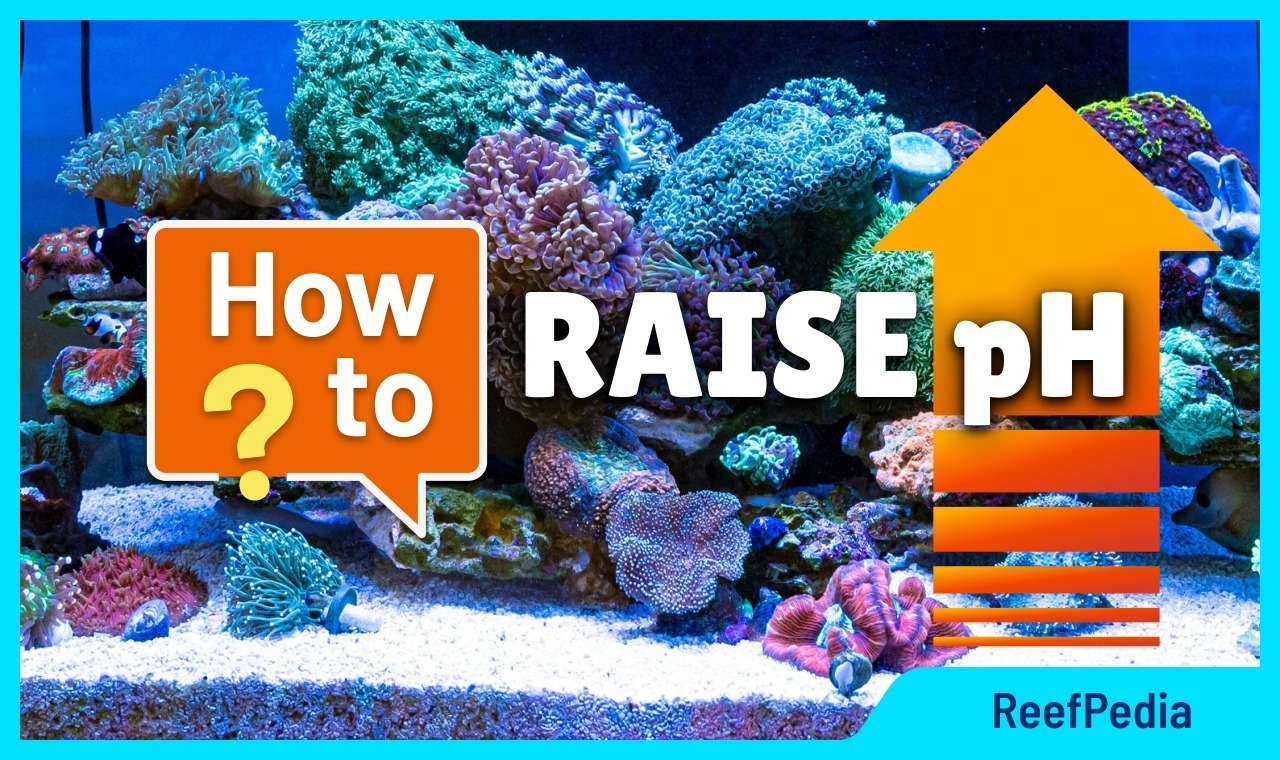How to raise the pH in a marine aquarium?
The range of acceptable pH in a reef tank is 7.8 to 8.5. However, the higher the pH, the better. The recommended pH is 8.1 to 8.4. I know that many aquarists struggle to keep the pH higher than 7.9, so often the pH varies between 7.7 and 7.9.
Causes of too low pH in the water
There can be quite a few causes of too low a pH in the water. I have described it in the article available here.
Before attempting to achieve a more favourable pH in a marine aquarium, I’d advise you to to read the article mentioned above and choose your method precisely.
Here’s a few useful tips for raising the pH
Add more fresh air from outside
If the CO2 concentration in the aquarium room is too high, bringing in more fresh air from outside should help.
Before you take this step, you can use a carbon dioxide meter to check the CO2 concentration in the room. If the reading indicates above 1,000 ppm, this may suggest a potential problem with the fresh air in the room.
You can also try opening the windows and test the pH over the next few hours. Ideally, if you have an automatic pH meter – then you simply check the measurement history. If it turns out that too little air in the room is the culprit, it is a good idea to improve the ventilation in the room or bring fresh air directly into the skimmer, using a hose.
Use Kalkwasser
Another, albeit slightly less common, way to raise the pH is to use a kalkwasser. The hydroxide ions in the kalkwasser use carbon dioxide to increase the alkalinity. As a result, they remove excess CO2 and increase the pH.
Let the effluent from the calcium reactor into the skimmer pump
If you are using a calcium reactor, you can let the leachate from the reactor directly into the skimmer pump inlet. The pump will suck up the leachate and mix it with the oxygenated water, so the pH will increase.
Invest in a refugium
I have already written an article on the topic of refugiums. If you want to learn more about the refugium and how it works, make sure to give it a read.
In short, algae in the refugium use CO2 for photosynthesis. The result of photosynthetic production is the generation of energy and oxygen. Lowering the CO2 in the water and raising the oxygen will also cause the pH to rise. Some aquarists switch on the light above the refugium at night, when the pH level in the aquarium drops. The refugium raises it and stabilises the diurnal fluctuation.
Reduce stocking density in the tank
Fish consume oxygen and excrete carbon dioxide. Fewer fish in the tank will help raise the pH.
Install a larger skimmer
If you have a lot of fish and a skimmer that is too small, think about changing the skimmer to a larger one that delivers the optimum amount of oxygen to the tank.
Use different bacteria
I’ve noticed that in some cases changing the bacteria has a positive effect on raising the pH level in the water. This is my personal observation and I can’t promise that every aquarium will react the same way.
Increase water circulation
A simple way is also to increase the circulation of the water in the tank. Aim the circulators at the water surface. Gas exchange on the water surface will raise the pH.
A more powerful return pump
Increasing water flow in the aquarium should help to improve the pH value. As the water falls into the sump, it mixes with oxygen; the more water movement, the better the pH.
Raise the KH in the aquarium
KH and pH are linked. If the KH in the aquarium is low, increase its value and the pH in the tank will also increase.
Summary
In this article I have described a few available ways to raise the pH in a marine aquarium. The right pH level in the water is crucial for many important processes in a saltwater environment, so it’s vital to pay close attention to this parameter.
Here, on ReefPedia you’ll also find an article in which I explained the role of pH in a marine aquarium – have a read!
About the author

Marek Protasewicz
Reefkeeping has been my passion for over 10 years now. I love learning. The hobby has taught me many valuable lessons, patience being the best example.
Combining work and passion is my path. I run Crazy Coral, a marine aquarium shop, for a number of years. Building this business from the scratch I learnt from my own mistakes at a heavy cost.
Later I managed a project aimed at development of methods for quick growth of Corals in non-natural conditions. The project was carried out by Get Sales, Poland.
Presently, I am responsible for distribution strategy at Reef Factory, of which I am a
co-founder. The company produces smart devices for marine aquaristics.
The last projects I have been involved in are Social Reef and ReefPedia.



